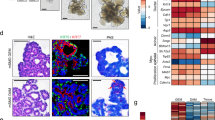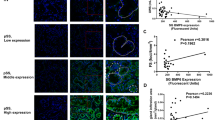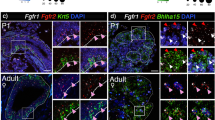Abstract
Transgene-encoded therapeutic secretory proteins can be efficiently secreted from salivary glands into saliva or the bloodstream after adenoviral (Ad)-mediated gene transfer. Since transgene expression from conventional vectors is typically unregulated, we evaluated the rapamycin-based dimerizer regulation system for control of transgene expression in, and consequent exocrine protein secreted from, rat salivary glands. We used human growth hormone (hGH) as a surrogate exocrine secretory protein. Two Ad vectors, Ad C4ZF3, encoding activation and DNA binding domain fusion polypeptides, and Ad Z12-I-GH-2, encoding hGH, were constructed and shown useful in vitro. Thereafter, both vectors were delivered into submandibular glands by retroductal infusion. After 24 h, rapamycin (0, 1, 3 or 10 mg/kg) was administered, and 20 h later hGH levels in saliva were determined. Salivary hGH levels were rapamycin concentration dependent. At a rapamycin dose of 10 mg/kg, total salivary hGH was 693±197 ng and the hGH concentration in saliva was 4.6±1.3 μg/ml. Over a 16-day experimental period, three separate administrations of rapamycin (3 mg/kg) induced distinct elevations of salivary hGH (∼100–200 ng total hGH) that were entirely rapamycin dependent. This study demonstrates for the first time pharmacological control of transgenic exocrine protein production and presence in saliva after salivary gland gene transfer, and the potential for its application to the management of oral, oropharyngeal and upper gastrointestinal tract disorders.
This is a preview of subscription content, access via your institution
Access options
Subscribe to this journal
Receive 12 print issues and online access
$259.00 per year
only $21.58 per issue
Buy this article
- Purchase on Springer Link
- Instant access to full article PDF
Prices may be subject to local taxes which are calculated during checkout



Similar content being viewed by others
References
Baum BJ, Wellner RB, Zheng C . Gene transfer to salivary glands. Int Rev Cytol 2002; 213: 93–146.
Baum BJ et al. Polarized secretion of transgene products from salivary glands in vivo. Hum Gene Ther 1999; 10: 2789–2797.
He X et al. Systemic action of human growth hormone following adenovirus-mediated gene transfer to rat submandibular glands. Gene Therapy 1998; 5: 537–541.
Yamano S et al. Recombinant adeno-associated virus serotype 2 vectors mediate stable interleukin 10 secretion from salivary glands into the bloodstream. Hum Gene Ther 2002; 13: 287–298.
Kelly RB . Pathways of protein secretion in eukaryotes. Science 1985; 230: 25–32.
Castle D, Castle A . Intracellular transport and secretion of salivary proteins. Crit Rev Oral Biol Med 1998; 9: 4–22.
O'Connell BC et al. Transfer of a gene encoding the anticandidal protein histatin 3 to salivary glands. Hum Gene Ther 1996; 7: 2255–2261.
Rivera VM et al. A humanized system for pharmcological control of gene expression. Nat Med 1996; 2: 1028–1032.
Rivera VM . Controlling gene expression using synthetic ligands. Methods 1998; 14: 421–429.
Rivera VM et al. Long term regulated expression of growth hormone in mice after intramuscular gene transfer. Proc Natl Acad Sci USA 1999; 96: 8657–8662.
Ye X et al. Regulated delivery of therapeutic proteins after in vivo somatic cell gene transfer. Science 1999; 283: 88–91.
Auricchio A et al. Constitutive and regulated expression of processed insulin following in vivo hepatic gene transfer. Gene Therapy 2002; 9: 963–971.
Auricchio A et al. Pharmacological regulation of protein expression from adeno-associated viral vectors in the eye. Mol Ther 2002; 6: 238–242.
Helms SR, Rottman FM . Characterization of an inducible promoter system to investigate decay of stable mRNA molecules. Nucleic Acids Res 1990; 18: 255–259.
Brown AM, Rusnock EJ, Sciubba JJ, Baum BJ . Establishment and characterization of an epithelial cell line from the rat submandibular gland. J Oral Pathol Med 1989; 18: 206–213.
Becker TC et al. Use of recombinant adenovirus for metabolic engineering of mammalian cells. In: Roth MG (ed). Methods in Cell Biology. Academic Press: San Diego, 1994, pp 161–189.
Mastrangeli A et al. Direct in vivo adenovirus-mediated gene transfer to salivary glands. Am J Physiol 1994; 266: G1146–G1155.
Zheng C, Wang J, Baum BJ . Integration efficiency of a hybrid adenoretroviral vector. Biochem Biophys Res Commun 2003; 300: 115–120.
Pollock R et al. Delivery of a stringent dimerizer-regulated gene expression system in a single retroviral vector. Proc Natl Acad Sci USA 2000; 97: 13221–13226.
Kagami H et al. Repetitive adenovirus administration to the parotid gland: role of immunological barriers and induction of oral tolerance. Hum Gene Ther 1998; 9: 305–313.
Chen Y et al. A putative sirolimus (rapamycin) effector protein. Biochem Biophys Res Commun 1994; 203: 1–7.
Hoque AT, Baccaglini L, Baum BJ . Hydroxychloroquine enhances the endocrine secretion of adenovirus-directed growth hormone from rat submandibular glands in vivo. Hum Gene Ther 2001; 12: 1333–1341.
Kagami H, O'Connell BC, Baum BJ . Evidence for the systemic delivery of a transgene product from salivary glands. Hum Gene Ther 1996; 7: 2177–2184.
Delporte C et al. Increased fluid secretion after adenoviral-mediated transfer of the aquaporin-1 cDNA to irradiated rat salivary glands. Proc Natl Acad Sci USA 1997; 94: 3268–3273.
Yang Y et al. Cellular immunity to viral antigens limits E1-deleted adenoviruses for gene therapy. Proc Natl Acad Sci USA 1994; 91: 4407–4411.
Voutetakis A et al. Long term functional erythropoietin production from salivary glands after rAAV-mediated gene transfer. Mol Ther 2003; 7: S185–S186; (Abstr. 474).
Andersson DI . Persistence of antibiotic resistant bacteria. Curr Opin Microbiol 2003; 6: 452–456.
Bryskier A . Viridans group streptococci: a reservoir of resistant bacteria in oral cavities. Clin Microbiol Infect 2002; 8: 65–69.
Martin JM et al. Erythromycin-resistant group A streptococci in schoolchildren in Pittsburgh. N Engl J Med 2002; 346: 1200–1206.
Erickson PR, Herzberg MC . Emergence of antibiotic resistant Streptococcus sanguis in dental plaque of children after frequent antibiotic therapy. Pediatr Dent 1999; 21: 181–185.
Maisetta G et al. Activity of human β-defensin 3 alone or combined with other antimicrobial agents against oral bacteria. Antimicrob Agents Chemother 2003; 47: 3349–3351.
Huang GT-J et al. A model for antimicrobial gene therapy: demonstration of human β-defensin 2 antimicrobial activities in vivo. Hum Gene Ther 2002; 13: 2017–2025.
Pinjon E et al. Molecular mechanisms of itraconazole resistance in Candida dubliniensis. Antimicrob Agents Chemother 2003; 47: 2424–2437.
Rothstein DM et al. Anticandida activity is retained in P-113, a 12 amino acid fragment of histatin 5. Antimicrob Agents Chemother 2001; 45: 1367–1373.
De Lucca AJ, Walsh TJ . Antifungal peptides: novel therapeutic compounds against emerging pathogens. Antimicrob Agents Chemother 1999; 43: 1–11.
Dorr W et al. Modification of oral mucositis by keratinocyte growth factor: single radiation exposure. Int J Radiat Biol 2001; 77: 341–347.
Fujisawa K, Miyamoto Y, Nagayama M . Basic fibroblast growth factor and epidermal growth factor reverse impaired ulcer healing of the rabbit oral mucosa. J Oral Pathol Med 2003; 32: 358–366.
Sonis ST et al. Defining the mechanisms of action of interleukin-11 on the progression of radiation-induced oral mucositis in hamsters. Oral Oncol 2000; 36: 373–381.
Alpsoy E et al. Interferon alfa-2a in the treatment of Bechet's disease: a randomized placebo-controlled and double-blind study. Arch Dermatol 2002; 138: 467–471.
Acknowledgements
We thank Dr Victor Rivera and ARIAD Pharmaceuticals (www.ariad.com/regulationkits) for providing the plasmids, rapamycin and AP21967 used in these experiments. We also thank Dr Rivera, and Drs J Chiorini, A Cotrim, M Schmidt and R Wellner for their comments on an earlier draft of this manuscript.
Author information
Authors and Affiliations
Rights and permissions
About this article
Cite this article
Wang, J., Voutetakis, A., Zheng, C. et al. Rapamycin control of exocrine protein levels in saliva after adenoviral vector-mediated gene transfer. Gene Ther 11, 729–733 (2004). https://doi.org/10.1038/sj.gt.3302225
Received:
Accepted:
Published:
Issue Date:
DOI: https://doi.org/10.1038/sj.gt.3302225
Keywords
This article is cited by
-
Prevention of Diabetic Neuropathy by Regulatable Expression of HSV-Mediated Erythropoietin
Molecular Therapy (2011)
-
Ultrasound-assisted non-viral gene transfer to the salivary glands
Gene Therapy (2010)
-
AAV5-mediated gene transfer to the parotid glands of non-human primates
Gene Therapy (2010)
-
Rapamycin control of transgene expression from a single AAV vector in mouse salivary glands
Gene Therapy (2006)
-
Enhanced transduction of mouse salivary glands with AAV5-based vectors
Gene Therapy (2006)



